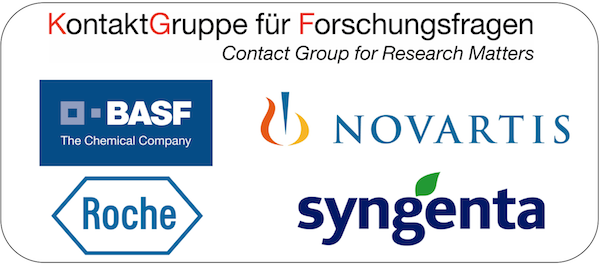Ausschreibung der SPG Preise für 2016
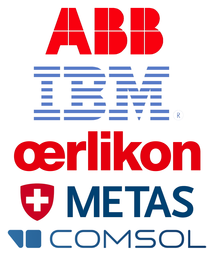 Auch im Jahr 2016 sollen wieder SPG Preise, die mit je CHF 5000.- dotiert sind, vergeben werden.
Auch im Jahr 2016 sollen wieder SPG Preise, die mit je CHF 5000.- dotiert sind, vergeben werden.
- SPG Preis gestiftet vom Forschungszentrum ABB Schweiz AG für eine hervorragende Forschungsarbeit auf allen Gebieten der Physik
- SPG Preis gestiftet von der Firma IBM für eine hervorragende Forschungsarbeit auf dem Gebiet der Kondensierten Materie
- SPG Preis gestiftet von der Firma OC Oerlikon für eine hervorragende Forschungsarbeit auf dem Gebiet der Angewandten Physik
- SPG Preis gestiftet vom METAS für eine hervorragende Forschungsarbeit mit Bezug zur Metrologie
- SPG Preis gestiftet von der Firma COMSOL für eine hervorragende Forschungsarbeit auf dem Gebiet der computergestützten Physik
Die SPG möchte mit diesen Preisen junge PhysikerInnen für hervorragende wissenschaftliche Arbeiten auszeichnen. Die eingereichten Arbeiten müssen entweder in der Schweiz oder von SchweizerInnen im Ausland ausgeführt worden sein. Die Beurteilung der Arbeiten er folgt auf Grund ihrer Bedeutung, Qualität und Originalität.
Der Antrag für die Prämierung einer Arbeit muss schriftlich begründet werden. Die Arbeit muss in einer renommierten Zeitschrift publiziert oder zur Publikation angenommen sein. Wenn mehrere Publikationen eingereicht werden, um die Leistungen des Kandidaten umfassender darzustellen, muß genau gesagt werden, welche Publikation für die Preisvergabe im Betracht gezogen werden soll. Der Antrag muss die folgenden Unterlagen enthalten:
- Begleitbrief mit Begründung,
- Lebenslauf des Kandidaten mit Publikationsliste,
- die zu prämierende Arbeit,
- und ein Gutachten.
Diese Unterlagen werden elektronisch im "pdf"-Format direkt an das Preiskomitee eingereicht (große Dateien bitte komprimieren (zip)):
Einsendeschluss: 29. Februar 2016
Die Preise werden an der Jahrestagung 2016 in Lugano überreicht.
Das Preisreglement befindet sich hier.
David Spichiger, SCS
25.11.2015
Novartis Chemistry Lecture Day, February 4th, 2016
Novartis Chemistry Lecture Day
Thursday, February 4, 2016
Horburg Auditorium, WKL-430.3.20
Müllheimerstrasse 195
4057 Basel
Novartis Celebrates Frontiers in Chemistry and is pleased to announce a day of excellent lectures on “Total Synthesis of Natural Products” and on “Late Stage Functionalization”.
Program
Morning Session: Total Synthesis of Natural Products
Chair: Dr. Peter von Matt
08:30h Opening Remarks
08:45h Prof. Mohammad Movassaghi, MIT Cambridge, USA
09:45h Coffee Break
10:15h Prof. Tohru Fukuyama, Nagoya University, Japan
11:15h Prof. Brian M. Stoltz, CIT Pasadena, USA
Afternoon Session: Late Stage Functionalization
Chair: Dr. Fabrice Gallou
14:00h Prof. Varinder K. Aggarwal, University of Bristol, UK
15:00h Prof. Cristina Nevado, University of Zürich
16:00h Coffee Break
16:30h Prof. Eric N. Jacobsen, Harvard University, USA
17:30h Apéro
Please note that seating capacity in the Horburg Auditorium is limited. Therefore, if you plan to attend, please register by sending an email by Friday, January 15th, 2016 to .
Organizing committee:
Guido Koch, Fabrice Gallou, Florian Kleinbeck, Peter von Matt
David Spichiger, SCS
25.11.2015
The promotion programme for cutting edge innovators
 The SwissInnovation Challenge takes a holistic approach to realising innovative business ideas
The SwissInnovation Challenge takes a holistic approach to realising innovative business ideas
The eight-month-long competition offers attractive awards and tailored education and mentoring programmes, as well as access to sponsors and potential business partners. The challenge is open to businesses and individuals who wish to introduce and implement an innovation or who have undertaken an innovation within the last two calendar years. It can take the form of a product innovation, a new business idea, an organisational innovation or an innovation in management. We will guide and support you along the way.
SwissInnovation an overview
The competition lasts eight months and is divided into three phases. There will be a selection process at the end of each round. Participants who reach the final round have the opportunity to win prize money amounting to 30,000 Swiss Francs. The winner will be awarded 20,000 Swiss Francs and two runners up will each be awarded 5,000 Swiss Francs.
Benefit from
- personal coaching
- a mentoring programme
- consultations with experts in the field
- workshops
- training und motivation events
Registration
Registering for the competition. Deadline is December 31, 2015!
Contact
Stefan Philippi, M.A. (lic. phil), Administrative Head
Prof. Dr. Rolf-Dieter Reineke, Business and Academic Head
University of Applied Sciences Northwestern Switzerland (FHNW)
School of Business
Institute of Management
Bahnhofstrasse 6
5210 Windisch
David Spichiger, SCS
18.11.2015
SCS Spring Meeting 2016
![]()
«Green Chemistry»
April 22, 2016, 09.30 - 17.00
University of Zurich, Department of Chemistry
Irchel Champus, Winterthurerstrasse 190, 8057 Zürich
The Swiss Chemical Society Spring Meeting is a one day symposium and provides a high quality program with national and international speakers. It is also the platform for the Werner Price Ceremony and the Werner Award Lecture.
As a general rule the Society holds its general assembly during the lunch break.
Program
Registration
Free admission. The registration deadline and the event are over. Thanks.
Contact
|
Chair: |
Conference Office: |
We cordially thank our partners for their generous support and the fruitful collaboration.
If you are interested in a collaboration, please do not hesitate to contact David Spichiger, SCS Executive Director ().
Sponsors
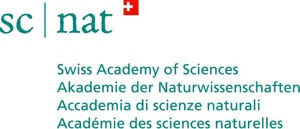 |
|
Exhibitors
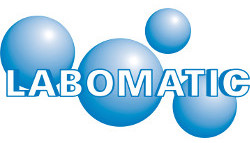 |
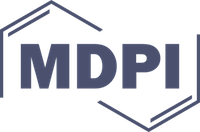 |
|
| |
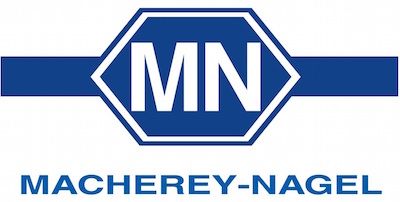 |
|
The event is hosted by:
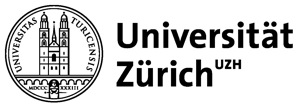
David Spichiger, SCS
07.08.2015
EuCheMS Brussels News Updates, November 2015
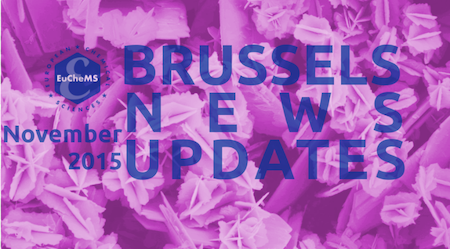
General European Highlights
New European Scientific Advice Mechanism – More Science for Better Policy
The European Commission's new Scientific Advice Mechanism (SAM) was officially launched on the 10th November with the announcement of the seven leading scientists who will form the first High Level Group of scientific advisors. Together with a six million euro grant to European academies and learned societies, this marks a new approach to the use of independent science advice in Commission policy making. The mechanism is being launched six months after it was first announced by the European Commission, following protests from the scientific community, including also EuCheMS, due to the extinction of the Chief Scientific Advisor position. The seven leading scientists integrating the SAM are Janusz M. Bujnicki, Pearl Dykstra, Elvira Fortunato, Rolf-Dieter Heuer, Julia Slingo, Cédric Villani, and Henrik C. Wegener.
Source: http://ec.europa.eu/research/
EuCheMS Publishes Outcomes of Workshop on Critical Raw Materials
The outcomes of the workshop on critical raw materials, co-chaired by MEP Ian Duncan and EuCheMS President David Cole-Hamilton, are now available online. Its main messages are summarised on a one-pager: recycle; substitute; create public-private partnerships; have long-term vision for research; evolve from a linear economy into circular economy approach; provide information to consumers; and collect data consistently.
Source: http://www.euchems.eu/
New Seal of Excellence to Increase Quality of Regional Research Funding
The new "Seal of Excellence" scheme will allow regions to recognise the quality label awarded to promising project proposals submitted under Horizon 2020, the EU's research and innovation programme and promote their access to different funding sources like the European Structural and Investment Funds (ESIF) and other national or regional investment programmes. More details can be found here.
Source: http://europa.eu/
Horizon 2020 Work Programme 2016-2017 in Western Balkan Countries
The European Commission will invest almost €16 billion in research and innovation in the next two years under Horizon 2020, following a new Work Programme for 2016-17 adopted in October 2015.
Albania, Bosnia and Herzegovina, Madedonia, Montenegro, and Serbia are associated to Horizon 2020, thus legal entities from Associated Countries can participate under the same conditions as legal entities from the Member States. Kosovo can also participate but as a third country.
Source: http://wbc-rti.info/
Air Quality: MEPs Approve New National Caps on Pollutants
EU Commission plans for more ambitious national caps on emissions of six key pollutants were endorsed by Parliament on the 28th October. Air pollution causes about 400,000 premature deaths in the EU yearly, and the plans could save up to €40bn in air pollution costs by 2030. The Members of the European Parliament (MEPs) approved the proposed caps for sulphur dioxide (SO2), nitrogen oxides (NOx), non-methane volatile organic compounds (NMVOC), methane (CH4) ammonia (NH3), and fine particulates (PM, less than 2.5 micrometers), to be achieved by 2020 and 2030, as proposed by the Commission.
Source: http://www.europarl.europa.eu/news/
EU Introduces more Efficient Monitoring of Drinking Water
As a first step following the European Citizens' Initiative Right2Water, as well as the public consultation on the quality of drinking water to which EuCheMS contributed, new rules were adopted by the Commission to provide flexibility to Member States as to how drinking water quality is monitored in around 100 000 water supply zones in Europe.
Source: http://europa.eu/
Education and Training Monitor 2015
The recently published 2015 edition of the EU's Education and Training Monitor shows more Member States have now reached their goals in increasing the number of students completing higher levels of education and minimising those leaving education early. This means Europe is on track to reach the targets set in its growth and jobs strategy by 2020. However, this progress is uneven, with discrepancies between and within Member States. Some interesting facts: employment rate of recent university graduates is 80.5%, in terms of gender 33.6% of men attend to tertiary education whereas 42.3% of women participate in tertiary education.
Source: http://europa.eu/
Climate change: EU Shows Leadership Ahead of Paris with 23% Emissions Cut
The European Union is on track towards meeting and overachieving its 2020 target for reducing greenhouse emissions by 20%, according to a report published by the European Environment Agency (EEA). The "Trends and projections in Europe 2015" report reveals that greenhouse gas emissions in Europe decreased by 23% between 1990 and 2014 and reached the lowest levels on record.
Latest projections by Member States show that the EU is heading for a 24% reduction by 2020 with current measures in place, and a 25% reduction with additional measures already being planned in Member States. The EU is already working towards its 2030 goal of an emissions reduction target of at least 40% —the EU's contribution towards the new global climate change agreement in Paris in December. Even though chemistry has already contributed to the current emissions cut EuCheMS believes that the contribution of chemistry will be even bigger in the future.
Source: http://europa.eu/
ERC Awards 44 Proof of Concept Grants
The ERC has recently announced the names of 44 of its grant holders who will receive top-up funding to explore commercial or innovation potential of the results of their ERC-funded research. These Proof of Concept grants, worth €150,000 each, can be used, for example, to establish intellectual property rights, investigate business opportunities or conduct technical validation.
Source: https://erc.europa.eu/
Funding Updates and Awards
Interview with 2015 EuCheMS EUCYS Awardee
Michaela Kajšová is a young and enthusiastic student who won the 2015 European Union Contest for Young Scientists (EUCYS) EuCheMS Award with her project entitled "The Effect of Cholesterol on Biological Membranes". You can read the interview by clicking on the link below.
Source: http://www.euchems.eu/
Chemistry for the Future Solvay Prize
The Chemistry for the Future Solvay Prize rewards a major scientific discovery that could shape tomorrow’s chemistry and help human progress.
The prize perpetuates the strong support for scientific research given by the founder of the Solvay Group, Ernest Solvay. It is intended to endorse basic research and underline the essential role of chemistry, both as a science and an industry, in helping solve some of the most pressing issues the world is facing.
The €300,000 prize is awarded every two years, and the 2015 Prize will be awarded on the 18th November at the Palais des Académies in Brussels, Belgium.
Source: http://www.solvay.com/
Innovative Training Networks
Deadline: 12 January 2016
Website: http://ec.europa.eu/research/
ERC Consolidator Grant 2016
Deadline: 2 February 2016
Website: http://ec.europa.eu/research/
Capacity Building in the Field of Higher Education EAC/A04/2015
Deadline: 10 February 2016
Website: https://eacea.ec.europa.eu/erasmus-plus/
ERC Proof of Concept 2016
Deadline: 16 February 2016
Website: http://ec.europa.eu/research/
Knowledge Alliances-Sector Skills Alliances 2016
Deadline: 26 February 2016
Website: https://eacea.ec.europa.eu/erasmus-plus/
Consultations and Roadmaps
Roadmap - Modernising the EU copyright framework
This roadmap focusses on the second set of measures that the Commission intends to adopt to modernize the existing copyright rules. Subject to further decisions, at the moment the Commission is focussing in particular on the following objectives: (i) allowing for wider online access to works by users across the EU, (ii) modernising the EU framework of exceptions and limitations, focussing in particular on those exceptions and limitations which are particularly key for the functioning of the digital single market and the pursuit of public policy objectives and (iii) achieving a well -functioning copyright market place, for example as regards the role of online intermediaries in relation to the distribution of copyright-protected content.
Website: http://ec.europa.eu/
Roadmap - Revision of the Fertilisers Regulation (EC) No 2003/2003
The main policy objective of the initiative is to incentivise large scale fertiliser production in the EU from domestic organic or secondary raw materials in line with the circular economy model by transforming waste into nutrients for crops. It is an outcome of public consultations in 2012.
The initiative would provide a regulatory framework radically easing access to the internal market for such fertilisers. Furthermore, it will address the current, well-recognised environmental concern stemming from cadmium contamination of fertilisers from phosphate rock, and remove the current market fragmentation to which it currently gives rise in the form of national cadmium limits. The setting of limit values, aiming at minimising the negative impact of fertiliser use on the environment and on human health, will contribute to a reduction of cadmium accumulation in soil and of cadmium contamination of food and water.
Website: http://ec.europa.eu/
Public Consultation on the Action Plan against the Rising Threats from Antimicrobial Resistance (AMR) (COM (2011) 748)
This consultation seeks views on the EU’s Action Plan against risks arising from antimicrobial resistance (AMR).
The Action Plan sets out 12 specific actions for achieving progress on six objectives: the appropriate use of antimicrobials, infection prevention, research and innovation on new antimicrobials and treatment alternatives, international collaboration, monitoring and surveillance, and awareness.
Deadline: 22 January 2016
Website: http://ec.europa.eu/
Consultation on a Possible Restriction of Hazardous Substances In Textile Articles and Clothing For Consumer Use
The Commission believes this public consultation is needed to target relevant chemicals and articles and to consider the proportionality and enforceability of a possible restriction in this area. The main objectives of the public consultation is to collect information on 1) the presence or likelihood of presence of the identified carcinogenic, mutagenic or reprotoxic (CMR) substances in relevant consumer articles and in so far as is possible also gather information on their concentration, function and on the availability of alternatives; 2) and on the potential socio-economic impacts and the enforceability of the possible restriction.
Deadline: 22 January 2015
Website: http://ec.europa.eu/growth/
Public consultation on Zinc Oxide in the framework of Regulation (EC) No 1223/2009 on cosmetic products
The European Commission is inviting any interested parties, including authorities of Member States, manufacturers of cosmetic products, producers of the substances concerned and relevant industry and consumers associations, to submit their comments on the proposed measures and on their possible economic impact.
Deadline: 24 December 2015
Website: http://ec.europa.eu/growth/
Business Updates
SMEs´ Research and Development within the EU
Among other data, the latest Flash Eurobarometer survey shows that only 6% of SMEs in the EU have worked with a partner based abroad (within the EU) for research and development, showing that there are still many collaboration opportunities to be explored.
This Flash Eurobarometer survey explores the international business activities carried out by SMEs inside and outside the Internal Market.
Source: http://ec.europa.eu/
Serbia is Joining COSME
Earlier this month, Serbia and the European Commission have signed an agreement formalising the entry of Serbia to the Competitiveness of Enterprises and Small and Medium-sized Enterprises Programme (COSME). Serbia's decision to join COSME was welcomed and the opportunity was taken to highlight another tool of the programme - the Enterprise Europe Network, which helps SMEs to develop and facilitate their internationalisation, and access innovative technology. COSME will support projects on a wide range of topics that include clustering, female entrepreneurship, reducing the administrative burden for companies and intellectual property rights protection for companies operating in non-EU countries.
Serbia is the sixth country outside the EU to join and contribute to the programme, after Montenegro, the former Yugoslav Republic of Macedonia, Moldova, Turkey and Albania.
Source: http://ec.europa.eu/growth/
Upcoming EuCheMS Recognised Events
10th European Winter School on Physical Organic Chemistry - e-WISPOC 2016
31 January - 5 February 2016
Bressanone, Italy
Website: www.chimica.unipd.it/wispoc/pubblica/
I Convegno del Grupo Interdivisionale di Chimica per le Energie Rinnovabili - ENERCHEM-1
Florence, Italy
18 - 20 February 2016
Website: http://www.enerchem-1.it/
13th Chemistry Conference for Young Scientists - ChemCYS 2016
Blankenberge, Belgium
16 – 18 March 2016
Website: http://www.chemcys.be/
1st European Young Chemists Meeting
Guimarães, Portugal, 26 – 29 April, 2016
http://5pychem.eventos.chemistry.pt
Forthcoming Events
Dawn or Dusk for Innovation Demand: Which Policies Stimulate Demand for Innovation?
Brussels, Belgium
17 November 2015
Website: http://ec.europa.eu/research/
Standardization in Horizon2020 – Webinar
Online
17 November 2015
Website: http://ec.europa.eu/
Fuel Cells and Hydrogen Joint Undertaking Programme Review Days & Stakeholder Forum
Brussels, Belgium
17 – 19 November 2015
Website: http://ec.europa.eu/research/
COP 21 - 21st Session of the Conference of the Parties to the United Nations Framework Convention on Climate Change
Paris, France
30 November – 11 December 2015
Website: http://www.cop21.gouv.fr/en/
7th European Innovation Summit
Brussels, Belgium
7 – 10 December 2015
Website: http://ec.europa.eu/research/
Conference of the European Innovation Partnership (EIP) On Raw Materials and Horizon 2020 Brokerage Event on Raw Materials
Brussels, Belgium
9 – 10 December 2015
Website: http://europa.eu/

6th EuCheMS Chemistry Congress
11 - 15 September 2016
Seville, Spain
Website: http://euchems-seville2016.eu/

EuCheMS Newsletter
November issue of EuCheMS Newsletter is available here, with articles on:
• Countdown to #6ECC
• EuCheMS meets ACS in Boston
• EuCheMS Executive Board: Meet the Members
|
|
|
David Spichiger, SCS
16.10.2015
Page 122 of 299


